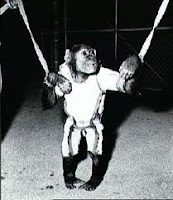Posted on November 30, 2018
 People have always tried to keep food fresh and edible. Packing fish in ice or snow, keeping potatoes in cool underground cellars, smoking meats, drying fruit - all of this and more are attempts to preserve food so it can be eaten at a later date.
People have always tried to keep food fresh and edible. Packing fish in ice or snow, keeping potatoes in cool underground cellars, smoking meats, drying fruit - all of this and more are attempts to preserve food so it can be eaten at a later date.
And then there's canning.
Canning can look like this, in a factory:
And it can look like this, in a home:
"Canning," in a home, tends to look more like "jarring." And that's because of John Landis Mason's invention:
The Mason jar is made of glass. It has a metal screw-top with a matching lid with a rubber seal.
This seemingly simple idea made it much safer for ordinary folks to preserve fruits and vegetables in jars. Before Mason's invention, people used flat lids made of tin that they sealed with wax.
But the wax seal was messy. And, worse, it was pretty unreliable. If the wax wasn't applied perfectly, deadly bacteria could enter the preserved food. And sometimes the wax would chip off - again allowing bacteria inside.
 Mason's invention ensured that he became a household name - but he didn't get rich from his invention. He only held the patent for his idea for 20 years, and then everyone and her mother started producing "Mason jars." John Landis Mason ended up dying in poverty.
Mason's invention ensured that he became a household name - but he didn't get rich from his invention. He only held the patent for his idea for 20 years, and then everyone and her mother started producing "Mason jars." John Landis Mason ended up dying in poverty.
Here is a simple how-to for using Mason jars to can food.
 There are a bajillion ways to use Mason jars other than preserving produce. Here are some resources:
There are a bajillion ways to use Mason jars other than preserving produce. Here are some resources:50 + Best Ways to Use Mason Jars - with photos and links
18 Clever Ways to Use a Mason Jar - a short video
Also on this date:
Plan ahead:
Check out my Pinterest boards for:










































































